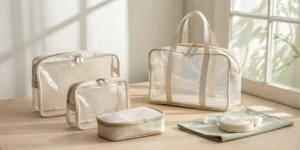
Our Academy
Jacky Zhou
2nd June, 2025
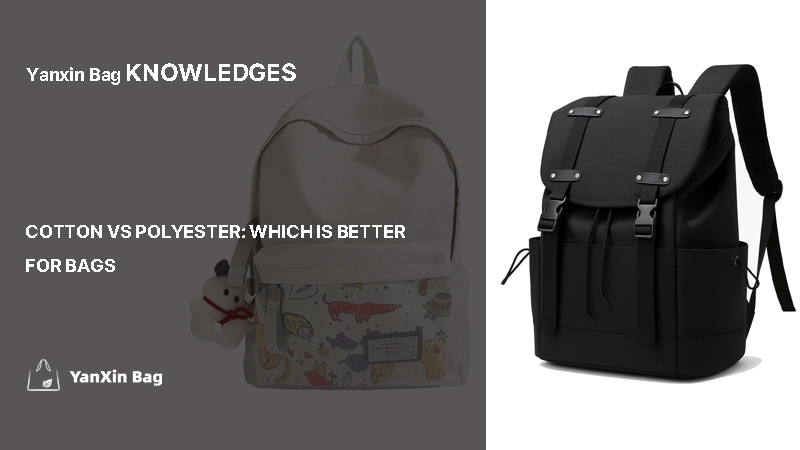
In daily conversations, many people treat “bookbag1” and “backpack2” as completely identical terms. But the truth is, there are subtle yet crucial differences between them—whether in design features, usage scenarios, or linguistic and cultural backgrounds.
Especially when you need to customize bags3 for businesses, schools, or brand events, understanding the difference between a bookbag and a backpack not only helps in choosing a more suitable style but also aids in accurately conveying your brand positioning.
A Bookbag usually refers to a relatively simple two-strap backpack with one main compartment as its core. Although it might also have 1–2 sub-pockets and side pockets (like a water bottle holder), the overall number of compartments is small, and its functionality is relatively basic. The design dimensions of a bookbag are typically fixed, categorized by the user’s age, including kindergarten, elementary school, middle school, high school, and college stages. Structurally, it emphasizes practicality and moderate load-bearing capacity, focusing on the essential function of “carrying books + basic school supplies.”
A Backpack, on the other hand, covers a much broader range. Besides common student backpacks, it also includes mini leather fashion backpacks for women, laptop backpacks for commuting, and even hiking/travel backpacks for outdoor use. These types of backpacks usually have complex designs with abundant compartments (such as laptop sleeves, shockproof layers, hidden pockets, USB ports, breathable back designs, etc.), emphasizing functionality, ergonomics, and adaptability to different usage scenarios. Sizes also range from compact (under 10L) to extra-large capacity (over 40L), far exceeding the usage scope of a bookbag.
The concept of a Bookbag originated from the basic need of early students to carry books, initially being a simple cloth or canvas bag. The Backpack originated from military and outdoor sports, later evolving into a comprehensive bag better suited for modern multi-scenario needs.
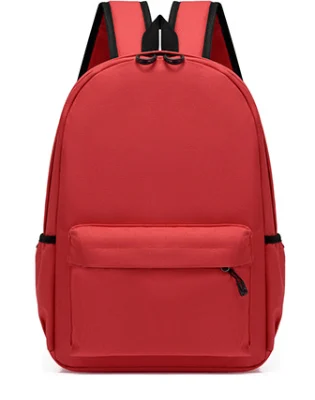

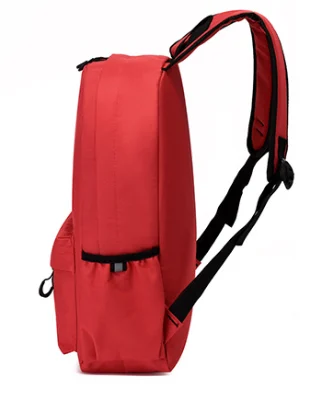
People in different regions and age groups also use these two words differently:
On Reddit, discussions about these two words are also quite lively. One user from Pittsburgh shared: “I grew up calling it a ‘bookbag’ and didn’t realize most people called it a ‘backpack’ until college. It might be a regional difference.”
Another user added: “I use both words, but if I’m carrying a laptop and office supplies, it’s definitely a backpack. ‘Bookbag’ sounds like I’m heading to third grade.”
These subtle linguistic differences can not only influence user purchasing psychology but are also worth paying attention to for brands in product naming and promotion.
To give you a more intuitive understanding of the core differences between a bookbag and a backpack, we’ve made a detailed comparison across multiple dimensions:
| Comparison Dimension | Bookbag | Backpack |
|---|---|---|
| Structural Design | Primarily one main compartment, usually with 1–2 sub-pockets or side pockets, simple structure | Multi-compartment design, often including laptop sleeve, inner lining pockets, hidden pockets, USB ports, etc. |
| Capacity Range | Relatively fixed, designed for school-age children and students (e.g., elementary, middle school bags) | Flexible sizes, from 10L mini bags to 40L+ travel backpacks |
| Appearance Type | Mostly traditional student style, uniform look, emphasizes practicality | Can be business, fashion, travel, hiking, etc., diverse styles |
| User Group | Mainly students, especially widely used in elementary and middle school | Suitable for students, commuters, travelers, hikers, office workers, etc. |
| Functionality | Primarily for carrying books and basic stationery | Diverse functions, suitable for laptops, electronic devices, clothes, outdoor gear, etc. |
| Comfort Design | Basic shoulder straps, light back padding | Emphasizes carrying system design, e.g., padded shoulder straps, breathable back panel, shockproof layers, etc. |
| Common Materials | Nylon, canvas, Oxford cloth, etc., emphasizing wear-resistance and light weight | Diverse materials, including waterproof, anti-cut, leather, RPET eco-friendly materials, etc. |
| Scenario Suitability | Mainly for campus, daily commuting | Covers learning, commuting, business travel, outdoor activities, etc. |
| Customizability | Suitable as a custom product for schools or educational institutions | Widely used for corporate, brand marketing, event giveaways, and other B2B customization |
Beyond the table comparison above, let’s further analyze a few key dimensions to help you more accurately determine whether to choose a bookbag or a backpack:
A Bookbag is usually designed for students, with a structure centered around “one main compartment + a few sub-pockets.” Its capacity design is rather standardized, emphasizing “simple practicality.” Common functions include holding textbooks, water bottles, small pencil cases, etc., meeting basic daily needs.
A Backpack, however, offers far richer functionality. It not only has multiple compartments and hidden pockets but may also support features like a protective laptop sleeve, waterproof materials, padded shoulder straps, and a pressure-reducing back panel. Its multi-functional design caters to different user scenarios, including students, office workers, travelers, and outdoor enthusiasts.
The typical users of a Bookbag are elementary and middle school students, primarily for commuting within the school. The size, weight, and patterns are mostly standardized. In contrast, a Backpack has long moved beyond the “student-only” positioning and is widely used in diverse fields such as business travel, commuting, hiking and camping, tech and digital, and corporate employee gift packages.
This also means that if your audience includes businesses, brands, e-commerce platforms, or international B2B buyers, the range of choices for custom Backpack products is far greater than for Bookbags.
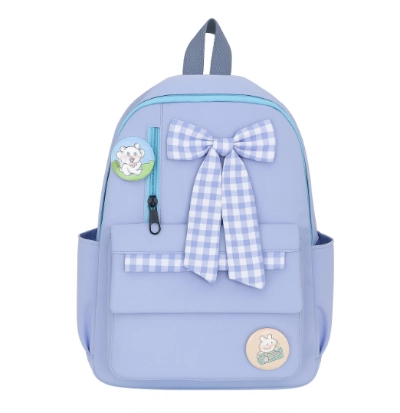
In terms of appearance, a Bookbag often leans towards cartoonish, bright color schemes, and features like reflective strips “child safety.” A Backpack, however, can range from minimalist business black to sporty color-blocking, and even trendy styles made from leather or eco-friendly materials. Its design language has a vast range, better expressing brand identity and group style.
If you need a bag with a simple structure for standard student educational scenarios, then a bookbag is a good choice. However, if you need a multifunctional bag with high functionality, adaptability to multiple scenarios, or for corporate customization purposes, a backpack is undoubtedly the better solution.
Although a bookbag is not as diverse in function and design as a backpack, it still holds irreplaceable advantages in some specific scenarios. Especially in the education industry, bulk purchasing, brand promotion, and other fields, a bookbag remains an efficient, practical, and cost-effective choice.
The most typical user group for Bookbags is still elementary and middle school students. Its simple structure, fixed capacity, and standardized pattern design are particularly suitable for:
Daily use by students in kindergarten, elementary, and middle school.
Schools making unified purchases and distributing student bookbags.
Needs of supplementary education institutions, tutoring classes, etc., for bags.
Since the size of a bookbag is usually designed for students’ body shapes, with moderate load-bearing and light weight, it can meet the daily needs of carrying textbooks, stationery, water bottles, and other basic items for school, avoiding functional overload that could instead become a burden.
Many non-profit organizations or educational projects use bookbags as promotional items to distribute to children in impoverished areas or rural schools. Such uses typically value:
Controllable costs, facilitating bulk purchasing.
Durable fabric, long service life.
Ample printing space, convenient for displaying organization logos and public service slogans.
In this scenario, a bookbag is not just a practical item but also serves the function of communicating brand philosophy or public welfare values.
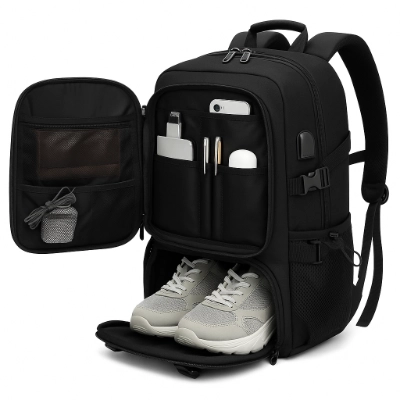
For brand owners, bookstores, stationery companies, etc., that need to customize bags, a bookbag is also an ideal “customization carrier”:
Large front area suitable for silk-screen printing, heat transfer, or embroidery.
Relatively lower unit price due to simple structure, suitable for large-scale promotional activities.
Especially suitable as gift bags for the campus market or “back-to-school” season related events.
For clients needing a custom bookbag, although the product itself is not complex, precisely because of this, the delivery cycle is short, production efficiency is high, and it is extremely cost-effective, often making it the first choice for event-related clients.
If your target users are students, or your project requires:
Controllable costs
Clear size standards
Easy bulk printing and distribution
Not too many complex functional structures
Then choosing a bookbag is a very suitable and efficient solution.
Of course, if you are dealing with more complex user needs and more diverse application scenarios, then you might need to turn to a backpack.
In the next part, we will introduce scenarios suitable for using a backpack and delve into the business and functional value brought by its diversity.
The strength of a backpack lies in its extremely wide range of applicable scenarios—from students and professionals to travel enthusiasts and minimalist commuters, almost every group can find a backpack that suits them. Compared to the singular function of a bookbag, a backpack offers greater flexibility and functional integration, suitable for more frequent and diverse daily use needs.
Nowadays, more and more companies choose to customize commuter backpacks as employee onboarding gifts, year-end benefits, or business travel toolkits. Such backpacks usually have the following functional features:
For B2B clients, customizing a batch of branded backpacks is not only highly practical but also offers long-term brand exposure value, providing a far better return on investment than a one-time advertisement.
If the bag’s purpose involves prolonged carrying, cross-regional movement, or classified storage of items, then a functional backpack will far outperform a structurally simple bookbag. For example:
These application scenarios require bags with stronger resistance to pressure, better storage capabilities, waterproofing, anti-theft features, etc., which bookbags cannot provide.
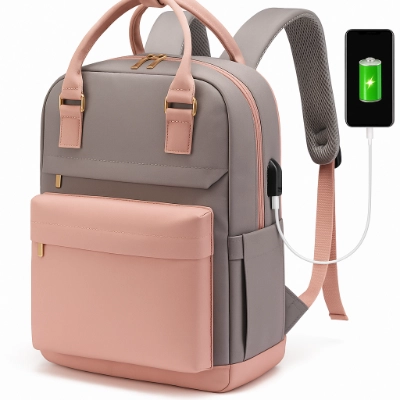
Unlike low-cost promotional items, a Backpack can play the role of a “high-value gift” in brand marketing. Many tech companies, consulting firms, and exhibition organizers choose to:
For example, a custom gray-black commuter backpack with a company logo and comprehensive features can convey “corporate strength” and “brand tone” far more effectively than an ordinary canvas bag.
Besides the high-frequency commercial uses mentioned above, Backpacks have many other application scenarios. Although the unit value may not necessarily be high, they have large shipment volumes, cater to a wide range of people, and offer flexible order forms, making them equally worthy of attention:
These clients may not have complex functional requirements, but they focus on fast delivery, visual appeal, pricing flexibility, and custom printing capabilities. They represent a “slow but steady and not to be ignored” segment of the backpack market.
When you face the following different types of customers or market needs, a Backpack might be a more suitable choice than a Bookbag:
Whether for large corporate clients or small to medium-sized sellers, the diversity, versatility, and market adaptability of Backpacks make them the most worthwhile core category in bag products for long-term investment and strategic planning.
A backpack is never just a bag; it can be a toolkit, a style statement, a brand carrier, or even a top seller. For this reason, it has become the preferred customization choice for more and more brands and channels.
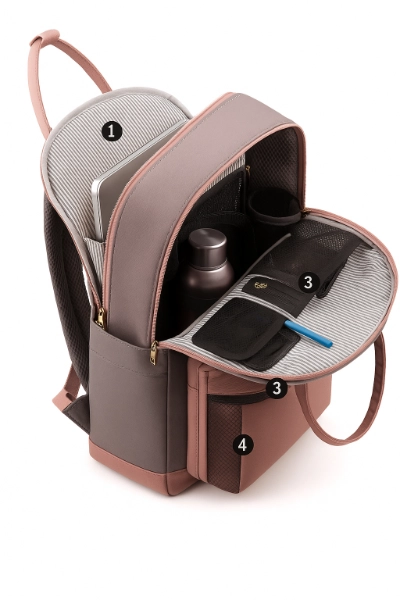
From the analysis in this article, it’s clear that Bookbag and Backpack represent different design philosophies, usage scenarios, and brand positioning.
If you value simple practicality and low-cost bulk customization, suitable for student or educational scenarios, a Bookbag is an ideal choice.
If you focus on rich functionality, adaptability to various groups and high-frequency scenarios, or use for corporate gifting and brand marketing, a Backpack clearly has more advantages.
For businesses looking to purchase, customize, or develop backpack products, the choice of type depends not only on budget or appearance but more importantly on how you want the product to carry your brand value and meet customer needs.
Yanxin Bag has over 13 years of experience in bag exporting. We have long provided brand clients, overseas distributors, event agencies, and retail brands with:
Design and production of various custom bookbags and custom backpacks
Flexible customization of materials, structures, colors, printing, and packaging methods
One-stop service including rapid prototyping + mass production + global delivery
Whether you are planning a promotional event, developing your own brand, or completing your SKU structure, we can provide you with competitive product solutions and implementation support.
Feel free to contact Yanxin Bag for free sample suggestions, product quotations, and custom solutions.
1 Bookbag – Understanding the distinction can help you choose the right bag for your needs, especially in educational or promotional scenarios where simplicity and low cost are essential.
2 Backpack – This link can clarify the practical and functional advantages of backpacks in business, travel, or multifunctional use cases, guiding B2B clients toward smarter product selection.
3 Customize bags – Linking here can provide guidance on customization options (e.g., printing methods, material selection), helping businesses boost brand visibility and make informed decisions.
Q1: What is the main difference between a bookbag and a backpack?
Answer: A bookbag typically has a simpler structure with one main compartment and is mostly used by school-age children. A backpack, however, includes multiple compartments and is designed for broader use such as commuting, travel, and brand marketing.
Q2: When should I choose a bookbag over a backpack for bulk customization?
Answer: Bookbags are ideal for schools, educational institutions, or charity projects where cost control, standardized size, and easy printing are important. They are lightweight and designed for basic student needs.
Q3: Are backpacks better for business or promotional gifting?
Answer: Backpacks are better suited for business use, corporate giveaways, or promotional events. They offer advanced features like laptop compartments, USB ports, and ergonomic designs, enhancing both function and brand value.
Q4: What is the best type of backpack for corporate commuting?
Answer: A commuter backpack with a laptop sleeve, USB charging port, breathable back panel, and large capacity is ideal for office workers. It enhances comfort and productivity while promoting brand visibility when customized.
Q5: Is “bookbag” still commonly used in modern English?
Answer: The term bookbag is more commonly used in the Southern U.S., especially among older generations. In contrast, “backpack” is more universally used across the U.S., particularly by younger people and in business or e-commerce contexts.
Q6: Can I use a backpack as carry-on luggage for business trips?
Answer: Yes, many business-style backpacks are designed with TSA-friendly features, padded laptop compartments, and durable materials, making them ideal for air travel and corporate commuting.
Q7: What kind of backpack is best for hiking or outdoor activities?
Answer: Outdoor backpacks typically offer hydration bladder compartments, waterproof zippers, and attachment systems for gear. These are built to withstand rugged conditions and are perfect for hiking and camping.
Q8: How do I choose between a fashion backpack and a functional one?
Answer: Fashion backpacks prioritize design, color, and trendiness, suitable for daily casual use. Functional backpacks focus on capacity, padding, and organizational features, better for work, school, or travel.
Q9: What materials are most commonly used for bookbags and backpacks?
Answer: Bookbags often use nylon, Oxford fabric, or canvas for durability and lightness. Backpacks can use a wider range, including waterproof polyester, RPET, anti-theft fabrics, and even eco-leather, depending on their purpose.
Q10: Is it possible to fully customize backpacks for branding purposes?
Answer: Yes, custom backpacks can be tailored in material, structure, color, print technique, and packaging. This makes them excellent tools for brand promotion, corporate gifts, or e-commerce retail expansion.

Order or no-order we are Always here to help you!
We will contact you within 1 working day, please pay attention to the email with the suffix “@yanxinbag.com”.
Order or no-order we are Always here to help you!
We will contact you within 1 working day, please pay attention to the email with the suffix “@yanxinbag.com”.